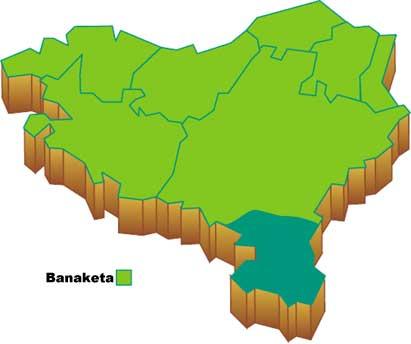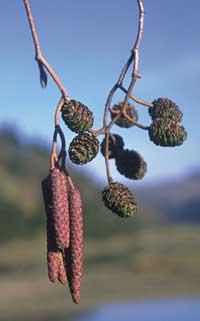The alder… has heart

All species of the 6 genera included in this family are shrubs or trees, in addition to monoicos and deciduous. Among the mentioned genera are known 170 species distributed in temperate and cold areas of the Northern Hemisphere, as well as in the Andes mountains. As for the peninsula, 4 genera, 6 species and 2 subspecies are mentioned, while in the Basque Country the same gender number and one subspecies less are mentioned.
Within the genus Alnus, we have among us 2 species located in the peninsula. Although Alnus cordata (Italian alder) is naturalized, it is currently expanding. The alder (A. glutinosa) that we are studying in this section is a medium tree that can reach a height of up to 20 meters, initially with pyramidal cup and that is slowly rounded and becoming irregular, with straight trunk and pardo-dark bark. Young bids and leaves face each other.

Leaves, fairly large 4-10 cm, bulging, obtuse, sawn on two shores, aborted and above dark green and somewhat soft on the bottom. Male flowers are usually in three in each bract and female flowers are geminated at the armpit of each bract. The fruits, avoides, in groups of 2-5, are suitable for the dispersion of winds. It flowers from beginning to May and the fruits ripen in autumn.
On the banks of rivers and streams, forming rows, it is a common tree, even on slopes with mass of water, reservoir and groundwater. In the Cantabrian side it is abundant, while in the Mediterranean areas it is less.
In the roots of the alder are some brown nodules and in them a bacterium ( Actinomyces alni). This bacterium lives in symbiosis with the plant, fixing atmospheric nitrogen. Therefore, we must take into account the ecological importance of this tree. Due to its nitrogen fixation capacity, it can colonize very poor soils in the presence of moisture, as well as shores and water slopes.
Its wood is widely used, especially for its durability in water. Its bark is rich in tannins, so it is usually used as tannery and as astrigent. They say that the infusion of the leaves is diuretic and anti-rheumatic. It has also been used as a patch to cure boils. The second skin of the alder is a remedy against notched snakes.
Family: Betuláceos |
Buletina
Bidali zure helbide elektronikoa eta jaso asteroko buletina zure sarrera-ontzian











